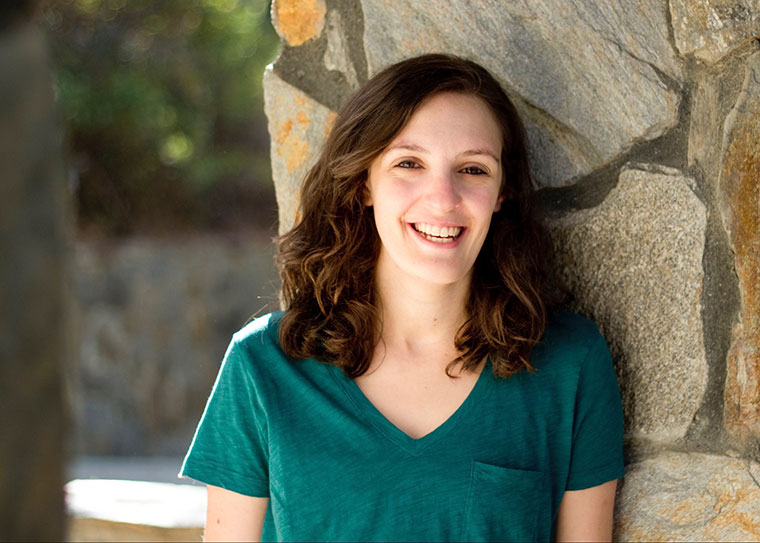
“Sarah Lawrence offered both the experiential and academic aspects to Dance/Movement psychotherapy.”
Rachael Singer MS ‘14 jokingly refers to her cohort - the first students to graduate from Sarah Lawrence’s Dance/Movement Therapy Graduate Program - as “the guinea pigs.” Of this dynamic, Rachael says, “There was something very special and unique that we shared.” We became very close with one another and are still good friends with many of them. The other metaphor she uses to describe her graduate student experience? “The campus felt like a cozy version of Hogwarts.” Between classes in Bronxville and her fieldwork placements in New York City, Rachael says she experienced the best of both worlds - a theme throughout her time in the program.
Why did you decide to pursue your MS in Dance/Movement Therapy at Sarah Lawrence?
When I first discovered Sarah Lawrence, I was in a place in my life where I was seeking who I was and what I wanted to do. My grandma had a lot to do with me pursuing this program, as she was there for me during a time of transformation. SLC offered a comprehensive program that also allowed students to take courses from other departments. The fact that the degree was a Masters in Science (versus a Masters in Arts) was also something that struck me as being unique from other programs. Sarah Lawrence offered both the experiential and academic aspects to dance/movement psychotherapy.
What do you wish you’d known as a first year entering the program?
While you’re here, take advantage of this amazing school and take classes from other programs. This helped me meet others at this school and also expanded my interests in theatre and dance. Allow yourself to get vulnerable since that is how we learn, while getting the support that you need. I recommend having your own therapy alongside, if that is something that works for you, as a lot comes up through this process of becoming a dance/movement therapist.
Is there a tenet of the program that particularly resonates with you?
For me, it was that we were able to observe and attend the Early Childhood Center that was part of the campus as well as having the opportunity for internships in a variety of areas and with different populations throughout the two years of the program. I came to this field with experience as a preschool teacher, but seeing kids through a movement observation lens was something that shifted my perspective entirely. This gave me the theoretical and experiential parts of the program and helped me learn my own movement profile. The program overall had a very holistic, humanistic, and developmental approach with a range of guests who brought their own experience and knowledge pertaining to what we were learning.
How did your clinical placements engage with your coursework?
My placements’ focus in music, dance, and art allowed me to get my feet wet in creative arts therapy. Even though I always knew I wanted to work with the younger population, I recommend working with a variety of populations; following what you already love and have interest in, while also trying something new in regards to your internship. Working with different age groups helped me to see what setting I felt most comfortable, competent, and confident in. We had an internship practice class that was a safe space to share our own feelings about our internships and reflect on them and receive support & strategies from our professors and our classmates.
What advice would you give to a prospective student?
I recommend visiting the campus, meeting students & alumni, and connecting with those who have similar interests. Becoming a dance/movement therapist has been a journey with ups and downs and lefts and rights. Yet, it is more than just a career—it is a way of life and has shaped who I am today. If this calls to you, take a leap of faith and follow your heart. I’m so glad that I chose this program. It was more than a degree; it has led me where I am today.